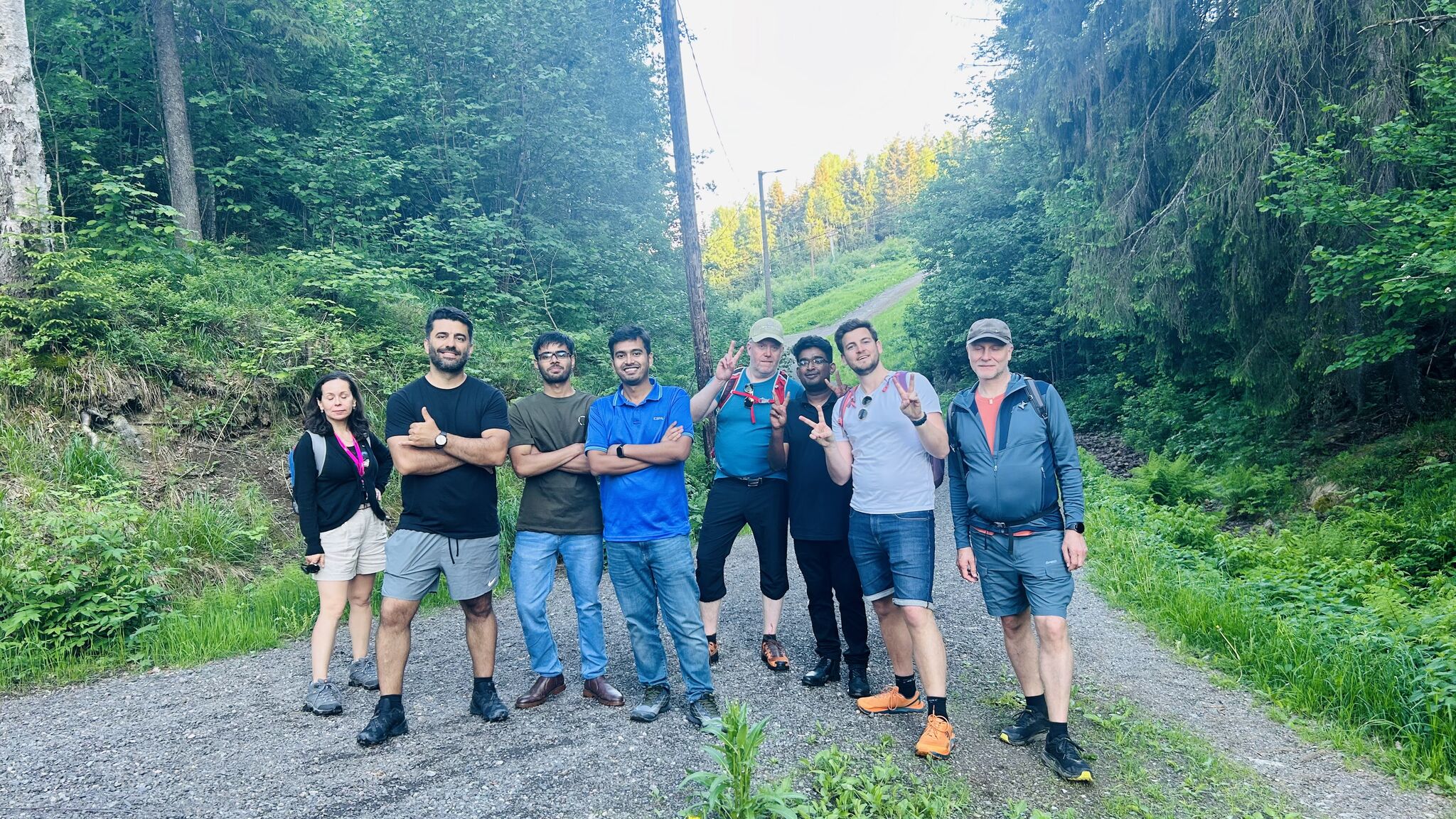
YOUR OWN CEFALO TEAM: Having an external development team at Cefalo feels like having your own in-house employees.
Going from chaos to structure when it comes to project management is not as difficult as you may think. You simply need to use the right tools, establish a solid backlog, and start working in sprints.
The common denominator among many of the smaller companies we meet is that there is room for improvement when it comes to working smart in projects. This especially applies to companies that go from few to several developers, where growth often makes the old methods less efficient.
The challenges are often centered around planning and routines, which again slows the overall efficiency. Thankfully, you don’t need that much extra structure before you can reap the benefits of the effort you put in. You simply have to roll up your sleeves and get to work.
The Benefits of Structured Development
The first question you should ask is what you would like to achieve by changing how you work. Structured development methodology is not a goal in itself: It’s a tool that is only useful if and when it helps you achieve further improvements.
Most likely you want more control, transparency and efficient use of resources. These are the obvious benefits of better project management. But the list doesn’t end there. Here’s a list of additional boosts that come with improved structure:
- Ensure good communication
- Avoid misunderstandings
- Clearer division and allocation of responsibility
- Predictability and transparency
- Clear insight of progression
- Better overview and correct priorities
- Developers perform better
- Improved handling of unforeseen events
- Avoid scope creep
- Create an environment for improvements
- Self-propelled, proactive teams who make better choices
We could keep going. But how do you get the necessary structure in place?

REQUIRES STRUCTURE: Working with an external development team requires structure in your processes and the use of smart tools.
Great Tools for Better Project Management
The first thing you should do is to choose a process management method to follow. There’s a large amount of literature available on effective processes for managing IT development projects.
Based on our experiences, we would recommend using Scrum. This is an agile framework especially designed to support complex product development, and there are widely available courses on the subject.
Another popular method is Kanban. If you currently have no structure in place, this could be an easier alternative to start with.
The main difference between Scrum and Kanban is Scrum’s increased focus on planning; you divide the work into smaller chunks of time, called “sprints”, with clearly defined deadlines and goals. Conversely, Kanban has you finish one (or a few) tasks at a time. As soon as one task is done, you begin the next task with the highest priority.
You can read more about Scrum vs. Kanban here.
The next step is choosing a tool to support project team management. The way we see it, you simply can’t work professionally without such a tool. Good examples of this type of software are Jira and Trello. In a sentence, these are systems that help you keep track of all the tasks associated with a project or a team.
This makes it easy for everyone involved to see what everyone on the team or project is working on, and whether they are on track on deadlines. You can read more about what separates Jiro and Trello, and which one would be best suited for you here.
The Important Backlog (or To-Do List)
Be aware that the method and the tools alone won’t guarantee you success. It’s vital that you take the time to establish what’s known as a backlog. This is an overview of all the tasks involved in your project: A to-do list.
Here you’ll describe all the different tasks and ideas, with associated needs, functionality and priority. It’s often useful to have the developers supply an estimate. A good backlog enables your team to work nonparallelly, without information getting lost in the process.
It’s no secret that how well you succeed with your project management (and thus the project itself) is strongly correlated to how detailed and accurate you’ve been when working with this backlog. The list of tasks is often viewed as a mountain to climb for a lot of people who want to get better at structuring their projects, and so they hesitate to get started.
How Miros Solved It
We have many satisfied customers, and Miros is one of them. Read their customer story here.

Don’t Let the Backlog Terrify You
If you’re among the people who are scared of the backlog, don’t be! You don’t have to describe every task in detail at once. Just make sure they are thoroughly filled in by the time someone needs to get started on them.
Remember: A backlog is a living document that needs continuous updates and changes.
There are no limits to what tasks you may include and the backlog of a project can look completely different depending on who’s making it.
Creating your backlog, then, doesn’t need to be as difficult as you might think. In its simplest form, it’s no more than a bullet point list of tasks to be completed. As soon as it’s made, you’ll have a powerful tool to improve your team’s understanding of the project’s context and roadmap.
Here’s how you do it:
- List every task at your preferred level of abstraction. Begin with the headlines and jot down as much as possible throughout the project’s lifecycle.
- When this is done, you can do another round and fill in more detailed descriptions of the tasks closest in time.
- Feel free to postpone describing the tasks that are further down the road. You can fill in the details when the time comes and you know more (just remember to do it).
Daily Meetings
We hear you saying: “Oh, come on, are daily meetings really necessary?” The answer is yes! The reason being that daily meetings ensure good communication, help distribute responsibility, and ensure misunderstandings are kept to a minimum. Daily meetings also lower the threshold for bringing up challenges that show up from day to day.
Without this daily, direct contact with your team (whether in person or online), you won’t be able to guide and listen to them in a good way. The meetings don’t need to be long – ten minutes are often enough. They’re supposed to be a quick check-in to keep each other informed and up to speed.
Work in Sprints
If you would like to take the structure and professionalization a step further, we’d recommend starting to work in sprints. A sprint is a delimited period, typically two to three weeks, with a goal of finishing certain tasks from the backlog. A large project is split into smaller, more manageable chunks. After each sprint, you can evaluate the current status and make adjustments going forward.
Instead of a long stream of tasks, you’ll have shorter periods with clearly defined assignments and deadlines. Our experience suggests this is a preferred way of working for many developers. They perform better within defined limits, giving them more control and more opportunities to reach various goals.
Remember to celebrate when completing tasks and finishing subgoals. It’s an important marker of progress towards the finish line.
How Dobee made it work
See how Dobee built a proactive team with Cefalo – fast progress, full control.

Hold Retrospective Meetings
After a sprint is finished, it’s a good idea to evaluate what went well and what could use some improvements. This is a natural time to hold what’s known as a retrospective meeting, where the most recent period is evaluated by the team as a whole. The goal is to come up with points of improvement to be prioritized in the coming sprint.
Here's how you do it:
- The meetings don’t need to be long, but it’s important that everyone contributes and gets to share their input. To ensure this, ask everyone to prepare two positive and two “negative” things (in a constructive way). This phase should be focused on the process. The contributions are written down beforehand, for instance in a spreadsheet or some other shared document.
- During the meeting, you should ensure that everyone gets to share their reasons for choosing as they did. By “forcing” everyone to contribute, everyone gets to be heard.
- There will usually be discussion on some of the points brought up. This is a good thing! Keep the atmosphere light, and the discussion constructive.Finally, pick two points of improvement for the next sprint. It’s important to only choose a few, as you most likely won’t have time to do everything at once. It’s better to keep the focus on something concrete and attainable.
Some questions to get your team thinking:
- What worked well this period?
- What could have been done better?
- Why did we do it this way?
- How could we do it instead?
- What made it work well?
- Why did it not go as planned?
When you’ve implemented the five important measures mentioned in this article (method, software, backlog, sprints, meetings), you’ll be well on your way to professionalizing your development and project management.
How to Succeed with Remote Management of Developers
We have extensive experience leading external development teams. Here you’ll find our best tips for success.






